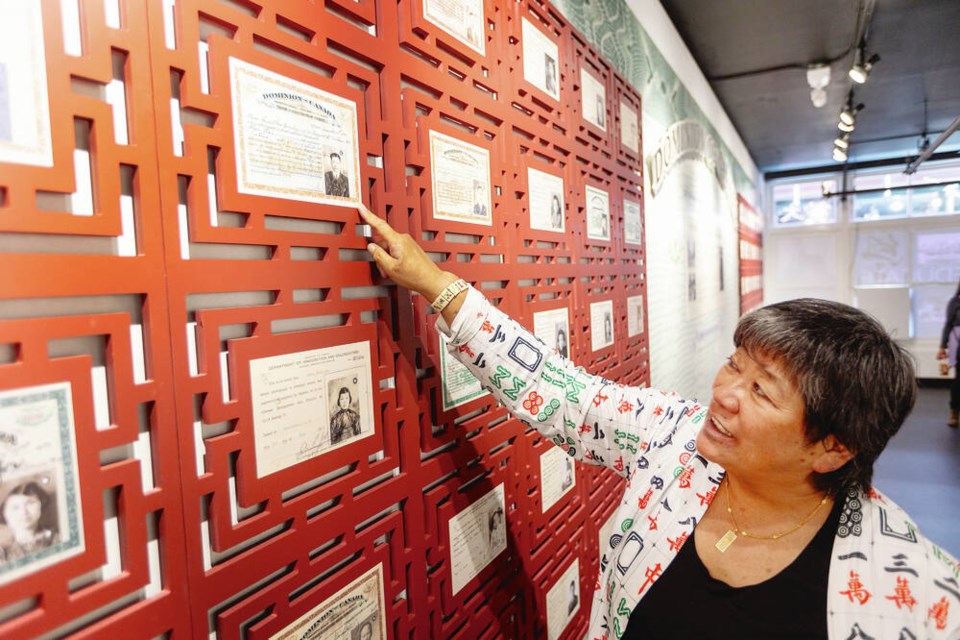A small museum in Victoria’s Fan Tan Alley is showing a glimpse of the immense government bureaucracy that once sought to disenfranchise and bar people of Chinese origin from Canadian society as part of its latest exhibit.
The exhibit, called “Victoria in the Time of Exclusion,” opens with a wall of 70 framed Chinese immigration certificates from local families.
Victoria Chinatown Museum Society chair Grace Wong Sneddon, who helped curate the exhibit, remembers visiting Fan Tan Alley as a child and playing with the “single bachelors” who lived in communal buildings in Chinatown.
They always laughed at every silly thing she did, she recalled.
It was only later that she realized that she was likely a bittersweet reminder of their children who they never saw grow up.
The single bachelors weren’t actually single, she said. “They weren’t bachelors. They just couldn’t be united with their families.”
The Chinese Canadian Museum exhibit, which opened last week, shows how Canadian policies of exclusion affected Victoria’s Chinese community.
Wong Sneddon worked with families to prepare their stories for the exhibit, a process that took about a year.
“It takes a long time to build trust,” she said. “I spent a lot of time talking to these families, working with them, having them work with me and how I wrote their story.”
It’s a deeply personal project for Wong Sneddon — her father’s certificate is part of the exhibit.
“This is a shared journey together,” she said.
July 1 is remembered as Humiliation Day among the early immigrant Chinese community. The Chinese Immigration Act, commonly known as the Chinese Exclusion Act, came into effect that day in 1923.
At the time, large parts of Canadian society sought to contain and exclude people of Chinese origin beginning with the disenfranchisement of Chinese in B.C. in 1871 and the federal Chinese head tax in 1885.
In 1921, Victoria School Board school trustees, led by George Jay, voted to segregate Chinese children from public schools.
Professional societies barred Chinese people from becoming lawyers, pharmacists, engineers or doctors by restricting membership.
The exhibit shows how Chinese people in Victoria ended up working as cooks, farmers, peddlers and tailors instead.
“Let’s talk about what these individuals and families had to do to make a living to feed their families, whether they were here or whether they were trying to put together their meagre savings so they can bring their families over,” Wong Sneddon said.
The Chinese Immigration Act was repealed in 1947, though some immigration restrictions remained until 1967.
Wong Sneddon said her family was able to reunite with her father after four years, but not everyone in Chinatown was as fortunate. “Some of them died here alone.”
Wong Sneddon said the exhibit is here to remember the men who never saw their families again. “I wanted to give voice to these families and to these individuals who never had my chance.”



